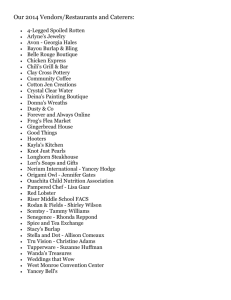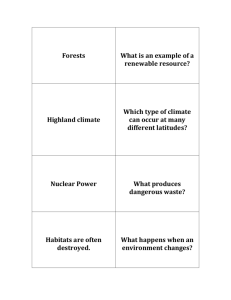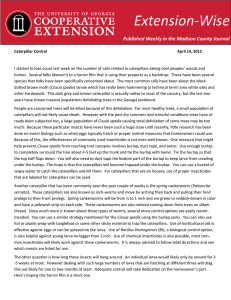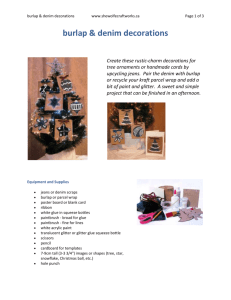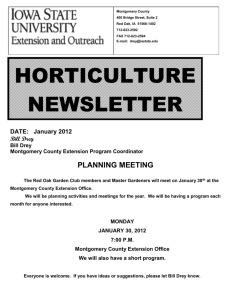How to Prepare and Protect your Garden for the Winter Brought to
advertisement
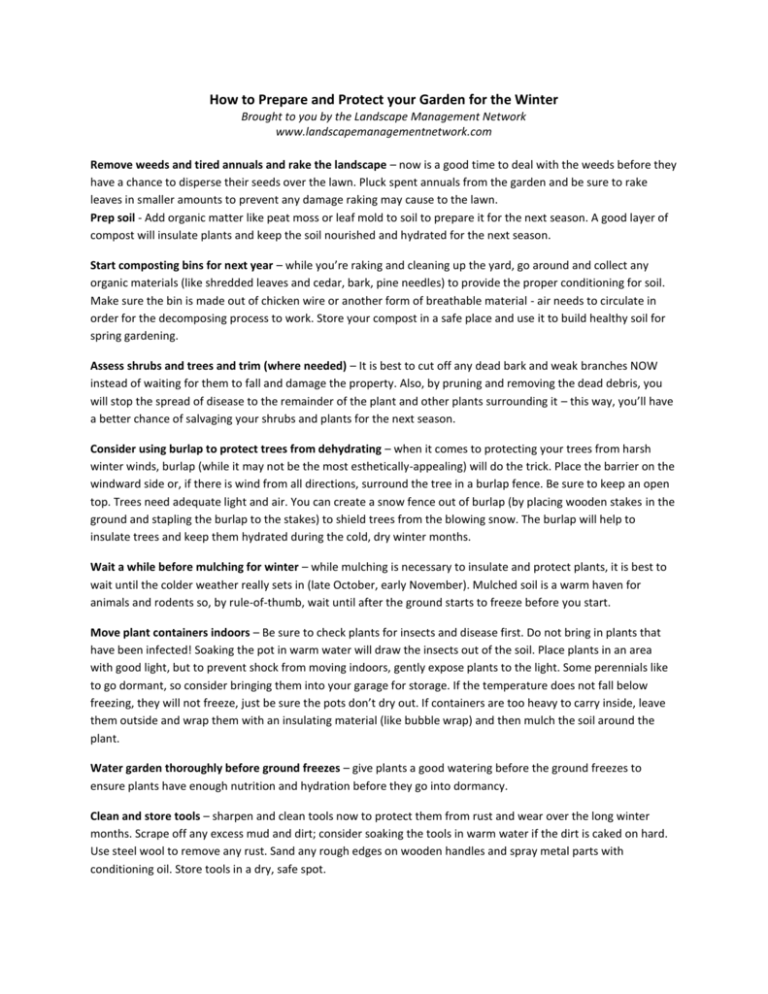
How to Prepare and Protect your Garden for the Winter Brought to you by the Landscape Management Network www.landscapemanagementnetwork.com Remove weeds and tired annuals and rake the landscape – now is a good time to deal with the weeds before they have a chance to disperse their seeds over the lawn. Pluck spent annuals from the garden and be sure to rake leaves in smaller amounts to prevent any damage raking may cause to the lawn. Prep soil - Add organic matter like peat moss or leaf mold to soil to prepare it for the next season. A good layer of compost will insulate plants and keep the soil nourished and hydrated for the next season. Start composting bins for next year – while you’re raking and cleaning up the yard, go around and collect any organic materials (like shredded leaves and cedar, bark, pine needles) to provide the proper conditioning for soil. Make sure the bin is made out of chicken wire or another form of breathable material - air needs to circulate in order for the decomposing process to work. Store your compost in a safe place and use it to build healthy soil for spring gardening. Assess shrubs and trees and trim (where needed) – It is best to cut off any dead bark and weak branches NOW instead of waiting for them to fall and damage the property. Also, by pruning and removing the dead debris, you will stop the spread of disease to the remainder of the plant and other plants surrounding it – this way, you’ll have a better chance of salvaging your shrubs and plants for the next season. Consider using burlap to protect trees from dehydrating – when it comes to protecting your trees from harsh winter winds, burlap (while it may not be the most esthetically-appealing) will do the trick. Place the barrier on the windward side or, if there is wind from all directions, surround the tree in a burlap fence. Be sure to keep an open top. Trees need adequate light and air. You can create a snow fence out of burlap (by placing wooden stakes in the ground and stapling the burlap to the stakes) to shield trees from the blowing snow. The burlap will help to insulate trees and keep them hydrated during the cold, dry winter months. Wait a while before mulching for winter – while mulching is necessary to insulate and protect plants, it is best to wait until the colder weather really sets in (late October, early November). Mulched soil is a warm haven for animals and rodents so, by rule-of-thumb, wait until after the ground starts to freeze before you start. Move plant containers indoors – Be sure to check plants for insects and disease first. Do not bring in plants that have been infected! Soaking the pot in warm water will draw the insects out of the soil. Place plants in an area with good light, but to prevent shock from moving indoors, gently expose plants to the light. Some perennials like to go dormant, so consider bringing them into your garage for storage. If the temperature does not fall below freezing, they will not freeze, just be sure the pots don’t dry out. If containers are too heavy to carry inside, leave them outside and wrap them with an insulating material (like bubble wrap) and then mulch the soil around the plant. Water garden thoroughly before ground freezes – give plants a good watering before the ground freezes to ensure plants have enough nutrition and hydration before they go into dormancy. Clean and store tools – sharpen and clean tools now to protect them from rust and wear over the long winter months. Scrape off any excess mud and dirt; consider soaking the tools in warm water if the dirt is caked on hard. Use steel wool to remove any rust. Sand any rough edges on wooden handles and spray metal parts with conditioning oil. Store tools in a dry, safe spot.

